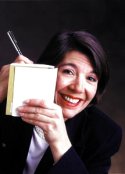
VOL. 9 NO. 3 THE MAGAZINE OF THE UNIVERSITY OF UTAH WINTER 1999-2000
Continuum Home Page - University
of Utah Home Page - Alumni
Association Home Page
Questions, Comments - Table of Contents
UP FRONT
The Way We Were
by Anne Palmer Peterson, Editor

Emeritus Professor of English William Mulder BA'40 MA'47 is wrestling
with the notion of what he calls a "faculty beauty contest."
"To reduce all these marvelous teachers and credentials to a half
dozen or so seems disjointed," he worries, puzzling over a list of
men and women of prodigious talent and generous spirit contending for
space in this Sesquicentennial tribute issue.
Doing justice to a century and a half of the University's history is a
daunting task. Paying homage to the great teachers at the University is
one of the things Continuum hoped to accomplish with a theme issue for
the University's 150th anniversary. So, we called in a panel of campus
veterans and invited them to propose whom they believe are the University's
most legendary teachers. Around the table, an eloquent, if quarrelsome,
discussion ensued among emeritus and current faculty whose own professorial
skills are renowned. The anecdotes behind the adjectives helped explain
how teachers such as Mignonette Spilman came to be known as professors
whose classes were not to be missed by students of the day. Spilman fell
just short of the learned group's "greatest of the great." It
seems that the revered Classics teacher (1930-1951) lacked a pyrotechnic
presentation style. According to Mulder, a student of hers, "the
most exciting thing in life was when she found a fifth conjugation to
a Latin verb." Yes, times have changed.
In the end, Mulder acquiesced, "The University as a whole is dedicated to excellence, and to try to sift out the excellent among the excellent is very difficult. But there are mountain peaks and there are foothills."
"Was Mignonette a mountain peak on your list?" Emeritus Political Science Professor J.D. Williams asked Mulder.
"No, but a charming, green, rolling foothill," he responded.
This issue contains considerable conjecture about what made the University what it is today. History is an educated guessing game, after all. A definitive report distinguishing accomplishments that are indisputable peaks from those less notable simply wasn't possible. Instead, this is a collection of reminders of the broad effect the University has had on different aspects of the society in which it is embedded. It also reflects pictorially and editorially how much the University of Utah has changed, as has the society it influenced.
If the campus featured a carillon bell tower, an ornamental archway, or even one particular plaza where students gather, the task of paying tribute to the U would have been simpler visually, as well as editorially. Just as Mulder, Williams, Ardean Watts MA'60, Boyer Jarvis, Paul Hodson BA'36, Jerilyn McIntyre, Dick Cummings BA'52 MA'53, Brigham Madsen BA'38, and Ann Darling struggled to define great teaching, the designer mulled over how to identify quintessential campus images.
The fact that there is no single campus icon symbolizes what is so unusual about the oldest state university west of the Missouri River. It is probably appropriate that no individual feature is more outstanding than any other. It is not the medical school, dance department, honors faculty, the feats of campus engineers, or the Greeks that is the foundation of the University of Utah. The U is exactly what a University ought to be-an amalgamation of overlapping elements that contributes not just to the lives of students, but to the state and even the larger community.
Contributions to this publication from the Multimedia Archives of the Special Collections department of the J. Willard Marriott Library were a valuable asset. It is the visual record of life on campus from the days of the University of Deseret, through the early years of campus at its present location, to images as recent as this fall's student orientation. In this collection, donated papers, photographs, films, scrapbooks, and other historical materials about the University of Utah are indexed according to precise archival standards. The editors culled from 200,000 images to document the faculty, administration, buildings and grounds, campus life, and the departments of the U. Many of the archives' most treasured photographs came from faculty and alumni who wanted them retained where they could be viewed by generations to come. Should this remind readers of materials in their possession, donating them to the library may provide a tax-deductible means to help preserve University history.
The U celebrates its heritage at its 150th Founders' Day celebration February 24, 2000. In a follow-up this spring, Continuum will shift its gaze from backward to forward, with an emphasis on all that the immensely successful capital campaign, "Generations of Excellence," has wrought. It will focus on ways that the University has responded to the dynamic needs of today's students and the society which sustains it.
For those interested in celebrating their academic heritage along with the University's, a special Sesquicentennial Life Members Club has been established. It will enable members to receive both commemorative issues of Continuum and each quarterly issue thereafter. For more information, see page 54 or the Alumni Association's Web site, www.alumni.utah.edu. With a fresh perspective on how keenly and intimately the peaks, foothills, and even the plains of the University of Utah have touched people's lives, here's to another 150 years.
Continuum Home Page - University of Utah Home Page - Alumni Association Home Page
Questions, Comments - Table of Contents
Copyright 1999 by The University of Utah Alumni Association